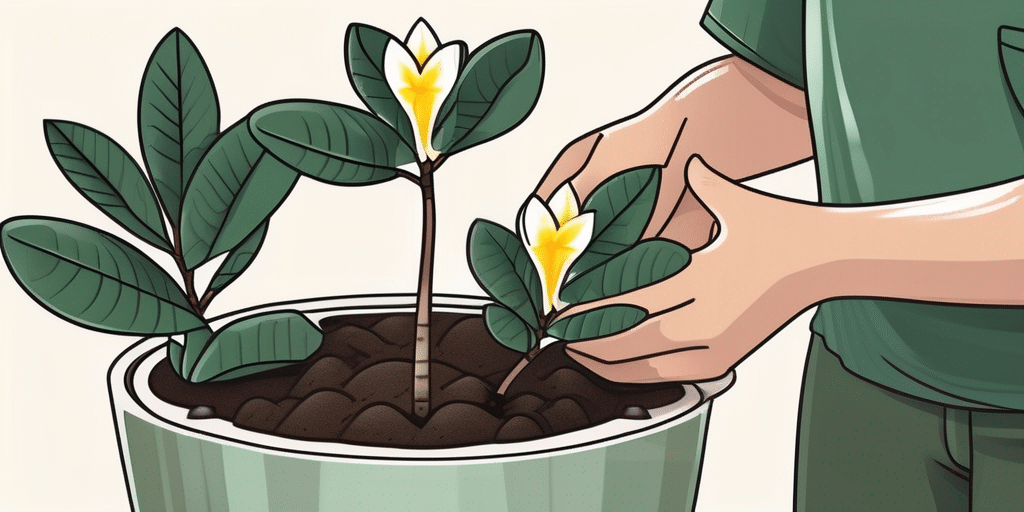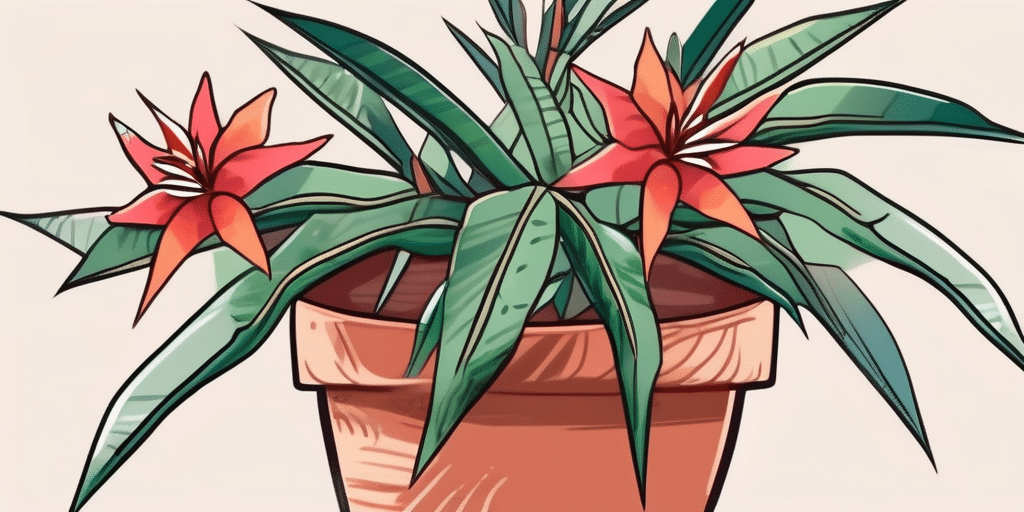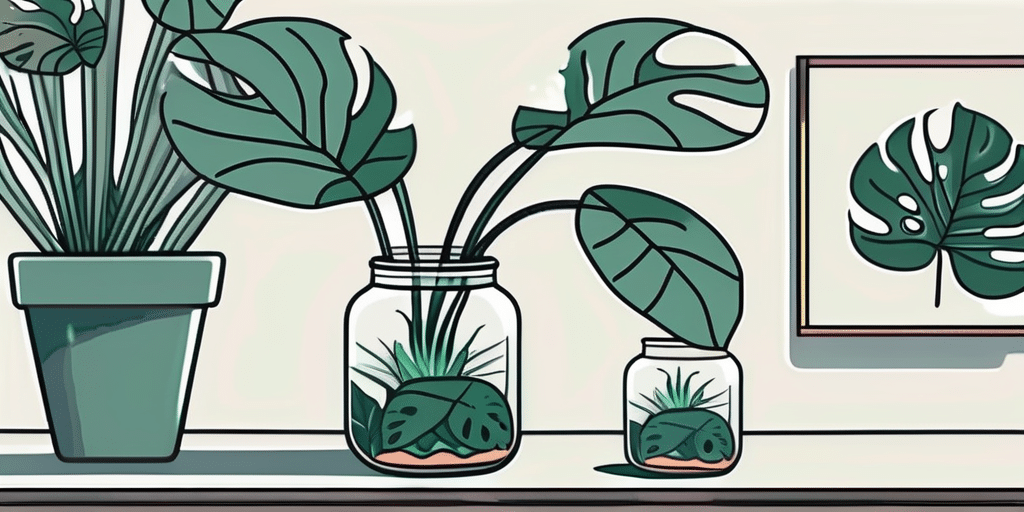Aloe plants are not only beautiful additions to any indoor or outdoor space, but they also have a wide range of medicinal properties. If you’ve ever wondered how to propagate aloe, you’re in luck! In this step-by-step guide, we’ll walk you through the process of successfully propagating your own aloe plants so that you can enjoy their beauty and benefits for years to come.
Understanding Aloe Propagation
Before we dive into the propagation process, it’s important to understand the science behind aloe propagation. Aloe plants reproduce through offshoots, also known as pups, and leaf cuttings. Offshoots are small plantlets that grow at the base of the parent plant, while leaf cuttings involve removing a healthy leaf and allowing it to form new roots. Both methods have their advantages and can yield new plants relatively quickly.
The Science Behind Aloe Propagation
When an aloe plant produces offshoots, it’s a natural way for the plant to multiply and propagate itself. These offshoots inherit the same genetic traits as the parent plant, making them identical in appearance and medicinal properties. This means that if you have a particularly healthy and vibrant aloe plant, propagating it through offshoots ensures that the new plants will have the same desirable characteristics.
Offshoots are essentially clones of the parent plant, which means that they will grow and develop in the same way. This can be advantageous if you have a specific variety of aloe that you want to propagate, as it guarantees that the new plants will be identical to the parent plant.
On the other hand, leaf cuttings allow you to create new plants from a single leaf, but the resulting plants may have slight variations in their characteristics. This is because leaf cuttings rely on the ability of the leaf to form new roots and develop into a new plant. While the resulting plants may not be genetically identical to the parent plant, they can still possess many of the same qualities and benefits.
Why Propagate Your Aloe Plant?
There are several reasons why you might want to propagate your aloe plant. Firstly, it’s an excellent way to increase your aloe collection without spending a fortune on new plants. Aloe plants are known for their ability to thrive and multiply, so propagating them allows you to expand your collection and enjoy the beauty and benefits of these plants in various areas of your home or garden.
Additionally, propagating aloe allows you to share the plant’s benefits with friends and family. Aloe vera, in particular, is renowned for its medicinal properties and is commonly used to soothe burns, moisturize the skin, and promote healing. By propagating your aloe plant, you can provide your loved ones with their own aloe plants, allowing them to experience the natural healing power of this remarkable plant.
Lastly, propagating aloe can be a rewarding and enjoyable experience that allows you to connect with nature. Watching the offshoots or leaf cuttings develop roots and grow into new plants can be a fascinating process. It provides a sense of accomplishment and satisfaction, knowing that you have successfully propagated a new life from a single plant.
Furthermore, propagating aloe can be a great way to learn more about the plant and its growth habits. As you observe the propagation process, you may discover new insights into how aloe plants develop and thrive. This knowledge can then be applied to caring for your existing aloe plants, ensuring their continued health and vitality.
In conclusion, understanding the science behind aloe propagation and the reasons for propagating your aloe plant can enhance your appreciation for these remarkable plants. Whether you choose to propagate through offshoots or leaf cuttings, the process can be both rewarding and educational. So go ahead and explore the world of aloe propagation, and watch as new life sprouts from your beloved aloe plant.
Necessary Tools and Materials for Aloe Propagation
Before you start propagating your aloe, gather the necessary tools and materials to ensure a successful process. Here are the items you’ll need:
Choosing the Right Aloe Plant
When selecting an aloe plant for propagation, choose a healthy parent plant that is free from pests or diseases. Look for offshoots or leaves that are well-established and have a vibrant green color. These are signs of a healthy plant that will yield successful propagations.
It’s important to note that different species of aloe may have different propagation requirements. Some species, like Aloe vera, are commonly used for their medicinal properties, while others, like Aloe arborescens, are more ornamental in nature. Consider your specific needs and preferences when choosing the right aloe plant for propagation.
Additionally, take into account the age of the parent plant. Younger plants tend to propagate more easily compared to older ones. However, older plants may have larger offshoots that can be divided into multiple propagations.
Essential Tools for Propagation
To propagate aloe, you’ll need a clean, sharp knife or pruning shears to separate offshoots from the parent plant. It’s important to use a clean tool to minimize the risk of introducing pathogens to the new propagations. Sterilize your knife or shears with rubbing alcohol before and after each use.
Having a clean container is also essential for successful propagation. Choose a container that is slightly larger than the offshoots you’ll be planting. This will allow room for growth without overwhelming the young plants. Make sure the container has drainage holes to prevent waterlogged soil, which can lead to root rot.
When it comes to potting mix, a well-draining soil specifically formulated for succulents is ideal. These mixes are typically composed of a combination of organic matter, such as peat moss or coconut coir, and inorganic matter, such as perlite or pumice. The organic matter helps retain some moisture, while the inorganic matter improves drainage.
Lastly, you’ll need a small watering can or spray bottle for watering the plants. Aloe propagations require careful watering to avoid overwatering, which can cause root rot. Using a watering can with a narrow spout or a spray bottle allows you to control the amount of water applied to the plants.
Selecting the Perfect Soil
Choosing the right soil mix is crucial for the success of your aloe propagations. A well-draining potting mix specifically formulated for succulents is ideal. These mixes are designed to provide the right balance of moisture retention and drainage, which is essential for the health of aloe plants.
When selecting a potting mix, look for one that is lightweight and porous. This will ensure that excess water can easily drain away, preventing waterlogged soil. Heavy or compacted soils can suffocate the roots and lead to root rot.
If you can’t find a pre-made succulent potting mix, you can create your own by combining regular potting soil with coarse sand or perlite. The sand or perlite will help improve drainage and prevent the soil from becoming too compacted.
It’s important to note that aloe plants prefer slightly acidic to neutral soil pH. If your potting mix is too alkaline, you can add some organic matter, such as peat moss or compost, to lower the pH. Aim for a pH range of 6 to 7 for optimal growth.
Remember to moisten the potting mix before planting the aloe propagations. This will help settle the soil and provide a good starting environment for the young plants.
The Aloe Propagation Process
Now that you have all the necessary tools and materials, it’s time to start the aloe propagation process. Follow these steps carefully for the best results:
When to Propagate Your Aloe
The best time to propagate your aloe plant is during the spring or summer when the plant is actively growing. This ensures that the propagations have enough energy to establish roots and grow into new plants successfully.
Step-by-Step Guide to Cutting Aloe Leaves
1. Select a healthy, mature leaf from the parent plant.2. Using a clean knife or pruning shears, make a clean cut at the base of the leaf, as close to the parent plant as possible.3. Allow the cut leaf to dry for a few days to form a callus. This prevents rotting when you plant it.4. Once the cut end has calloused over, you can plant it in a well-draining potting mix.
Rooting Your Aloe Cuttings
To root your aloe leaf cuttings, follow these steps:1. Prepare a small container with a well-draining potting mix.2. Insert the cut end of the leaf into the soil, burying it about an inch deep.3. Lightly water the soil to moisten it without saturating it.4. Place the container in a warm, bright location with indirect sunlight.5. Water the cutting lightly every few days to keep the soil lightly moist until roots start to form.
Caring for Your Newly Propagated Aloe
Now that you’ve successfully propagated your aloe plant, it’s essential to provide proper care to ensure its healthy growth:
Watering Your Aloe Plant
Water your newly propagated aloe sparingly, allowing the soil to dry out between waterings. Overwatering can lead to root rot and other issues. Stick your finger into the soil to check for moisture before watering, and water only if the soil feels dry.
Providing Adequate Sunlight
Place your newly propagated aloe plant in a location that receives bright, indirect sunlight. Aloe plants thrive in bright conditions but can suffer from sunburn if exposed to direct sunlight for prolonged periods. If you notice the leaves turning reddish-brown or yellow, it may be a sign of too much sun exposure.
Dealing with Common Aloe Plant Problems
While aloe plants are generally low-maintenance, they can still encounter some common problems. Watch out for signs of overwatering, such as yellowing leaves or soft stems. If you notice any signs of pests, such as aphids or mealybugs, treat them promptly with natural insecticidal soap or neem oil. Regularly inspect your plants for any signs of disease or stress and take appropriate action.
By following this step-by-step guide, you’ll be able to successfully propagate your aloe plants and enjoy their beauty, healing properties, and the satisfaction of growing your own plants. Happy propagating!





